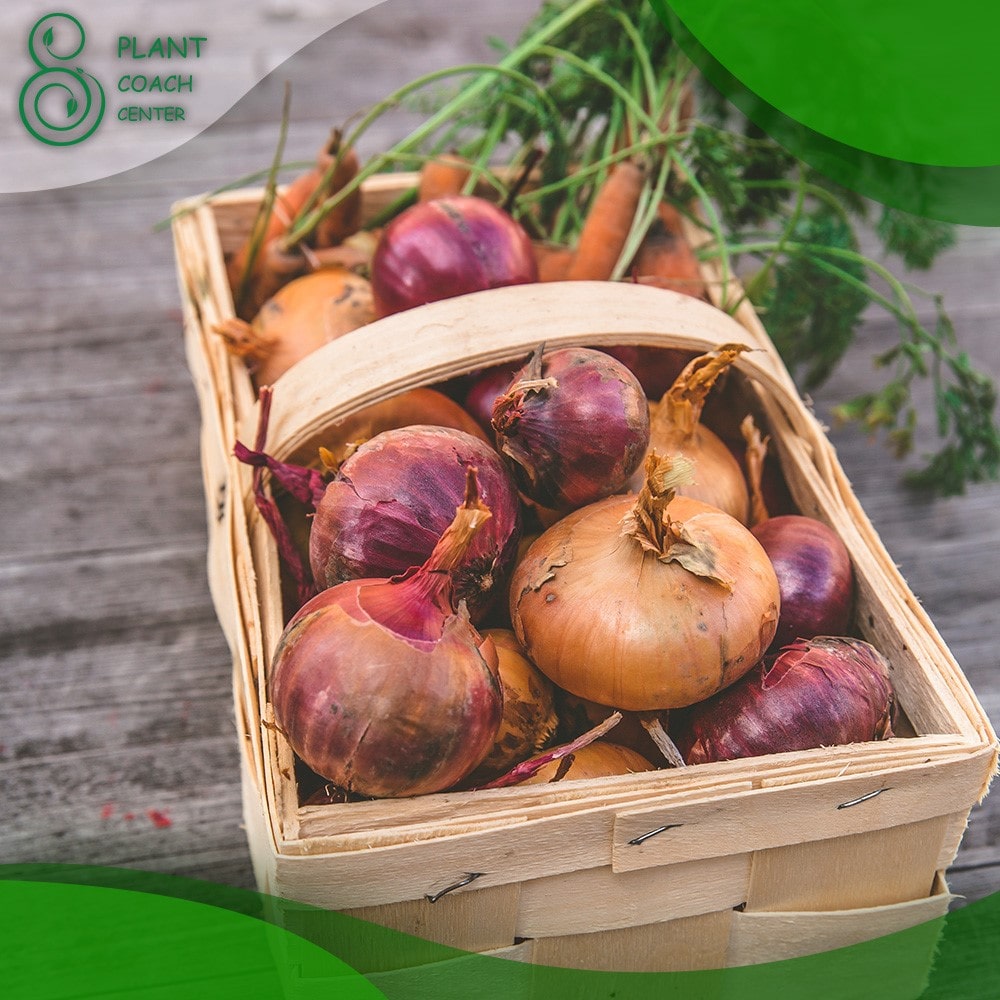When Do You Plant Onion Sets?
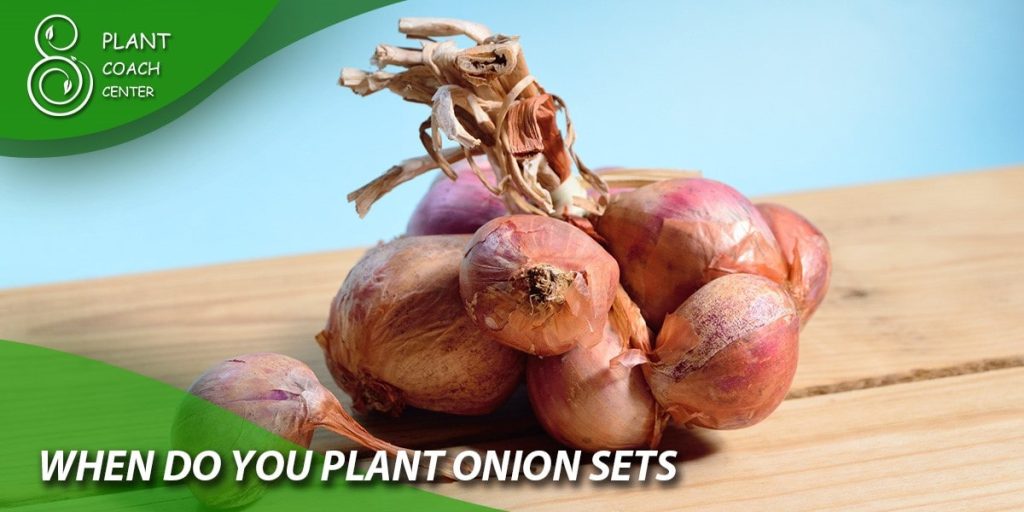
Welcome to the world of gardening, where the rhythm of seasons guides the delicate dance of cultivation. As you embark on your journey to grow plump, flavorful onions in your garden, understanding the art of timing becomes paramount. Planting onion sets is a nuanced process that requires an appreciation for the interplay of nature’s elements.
Whether you’re a seasoned gardener or just beginning to explore the joys of home cultivation, the question remains: When do you plant onion sets? This seemingly simple query unravels a tapestry of considerations – from the type of onion you choose to the unique climatic conditions of your region.
Join us as we dig deep into the intricacies of onion planting timelines, unearthing the secrets held by different varieties and geographic zones. Get ready to decode nature’s signals and master the techniques of transforming a handful of onion sets into a bountiful harvest. In this article, we’ll peel back the layers of uncertainty and set you on the path to onion-growing success, one carefully timed bulb at a time.
Nature’s Calendar: Understanding Seasonal Timing
In the gardening world, timing is everything – and when planting onion sets, nature’s calendar takes center stage. The growth cycle of onions is intricately linked to the changing seasons, with each step of development carefully synchronized with specific environmental cues. Understanding these cues is essential to ensure a successful onion harvest.
Early Spring Awakening
As winter loosens its grip and the first hints of spring emerge, it’s time to prepare the soil for planting. Onions thrive in well-drained, loose soil, so take the time to amend your garden beds with compost to create an optimal growing environment. The soil should be workable and not overly wet.
Temperature Thresholds
Onions are pretty hardy, but they do have their temperature preferences. Soil temperature plays a crucial role in determining when to plant onion sets. A soil temperature of around 50 to 75°F (10 to 24°C) is ideal for most onion varieties. Cooler temperatures can slow growth, while warmer temperatures can lead to bolting – the premature flowering of the onion plant.
Day Length Dictates
The type of onion you’re planting also factors into the equation. Onions are classified as short-day, long-day, or intermediate-day varieties based on their response to daylight hours.
Short-day onions form bulbs with shorter daylight exposure, making them suitable for southern regions. On the other hand, long-day onions require longer daylight hours and are better suited for northern climates. Intermediate-day onions fall in between.
Transitioning to the Garden
Once your onion sets have sprouted indoors or in a controlled environment, it’s time for the grand garden entrance. The soil should be dry enough to crumble when squeezed, indicating proper drainage. Gently plant the onion sets about 1 inch deep, with the pointed end facing up. Spacing is crucial to allow room for bulb development, so follow the recommendations for your specific variety.
Unveiling Onion Varieties: Tailoring Planting Schedules
When it comes to planting onion sets, there’s no one-size-fits-all approach. The world of onions is rich and diverse, offering a range of varieties with distinct growth requirements. Tailoring your planting schedule to match the characteristics of your chosen onion type is critical to reaping a successful harvest.
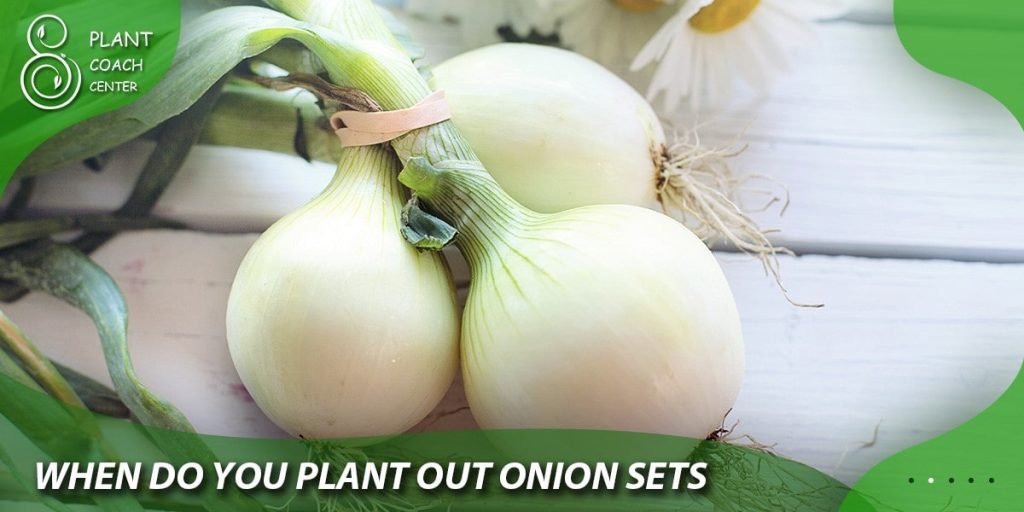
Short-Day Marvels
Short-day onions, often associated with southern regions, are attuned to shorter daylight hours. These onions require 10-12 hours of daylight to trigger bulb formation. As such, they are best suited for planting in the fall or early winter. By spring, these onions will have developed substantial bulbs ready for harvest.
Long-Day Wonders
Long-day onions crave extended daylight exposure of about 14-16 hours on the opposite end of the spectrum. These varieties flourish in northern locales where summer days are naturally longer. To give them ample time to develop bulbs, it’s advisable to plant long-day onions in early spring, allowing them the growing season they require.
The Intermediate Dance
Intermediate-day onions find their balance in the middle, needing around 12-14 hours of daylight to form bulbs. These versatile onions adapt well to various climates and are suitable for planting in both spring and fall. Their adaptability makes them a favorite for gardeners in transitional zones.
Geography Matters
It’s essential to consider your local climate and hardiness zone when selecting onion varieties and determining planting times. Research which types of onions thrive in your area and align your choices with your climate’s unique conditions.
Beyond the Bulb
While planting schedules are primarily influenced by onion types, factors like soil preparation and weather conditions also play pivotal roles. Ensure the soil is well-draining and fertile before planting, giving your chosen variety the best chance to establish itself.
Soil Matters: Preparing the Perfect Bed
As a painter needs a pristine canvas, successful onion growing starts with a well-prepared soil bed. The quality of your soil directly influences the health and productivity of your onion sets. Creating the perfect growing environment requires attention to soil texture, drainage, pH levels, and more.
Texture Tango
Soil texture sets the stage for onion growth. Aim for a loamy texture – a balanced sand, silt, and clay blend. Loam allows for proper water retention and drainage, preventing waterlogged or parched conditions that can stunt onion development.
Drainage Drama
Onions have no patience for soggy feet. To ensure adequate drainage, avoid planting in areas prone to waterlogging. If your soil has poor drainage, consider building raised beds to provide a controlled growing environment that keeps excess water at bay.
The pH level of your soil significantly impacts nutrient availability. Onions prefer a slightly acidic to neutral pH range of 6.0 to 7.0. Testing your soil’s pH and amending it if necessary ensures that your onion sets have access to the nutrients they need for robust growth.
Fertilization Finesse
Enrich your soil with well-rotted compost or a balanced fertilizer before planting. However, avoid overdoing it – excessive nitrogen can lead to excessive foliage growth at the expense of bulb formation.
Bed Preparation Ballet
Begin soil preparation in the fall or early spring. Clear the area of debris, weeds, and rocks. Dig the soil to a depth of at least 6 inches, breaking up clumps and incorporating amendments. Raking the soil smoothly completes the stage for planting.
Mulch Magic
Once your onion sets are planted, a layer of organic mulch – like straw or compost – can work wonders. Mulch conserves moisture, prevents weed growth, and regulates soil temperature, all contributing to healthy onion growth.
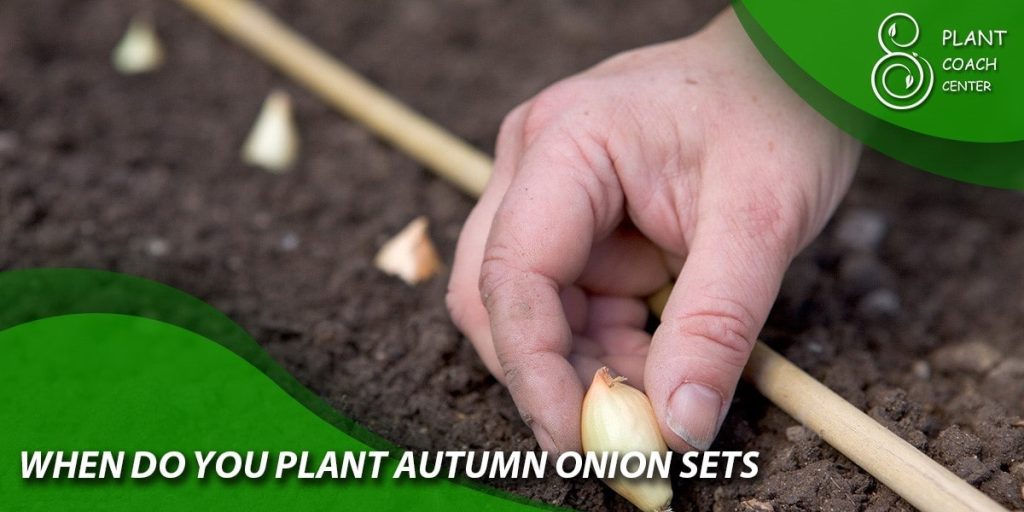
Cracking the Code of Geographic Zones
Gardening is a dance with nature, and understanding the rhythm of your local climate is essential for successful onion cultivation.
The concept of hardiness zones, as defined by the USDA Plant Hardiness Zone Map, provides valuable insights into the unique characteristics of your region’s climate. Deciphering these zones is like unlocking a treasure map that guides you to the best timing for planting onion sets.
Zone Zoning
The USDA Hardiness Zone Map divides North America into zones based on average annual minimum temperatures. Each zone is designated by a number, ranging from Zone 1 (coldest) to Zone 13 (hottest). This zoning helps gardeners identify the types of plants that are likely to thrive in their area.
Onion Preferences
Onions, being temperature-sensitive, have preferences for specific zones. Short-day onions, which prefer warmer conditions, thrive in Zones 7-13. Long-day onions, enjoying cooler temperatures, flourish in Zones 1-6. Intermediate-day onions, with their adaptable nature, cover many zones.
The Goldilocks Effect
Finding the zone that’s just right for your onion variety ensures they receive the optimal balance of warmth and cold. This balance affects everything from bulb formation to foliage growth, and getting it right sets the stage for a successful harvest.
Microclimates Matter
While hardiness zones provide a general guideline, microclimates within your garden can create small pockets with unique conditions. Factors like slopes, wind patterns, and sun exposure can influence temperature and frost risk. Observing these nuances can help you fine-tune your planting schedule even further.
Zone-Appropriate Timing
With your hardiness zone knowledge, consult planting guides and local gardening resources to determine the best times to plant onion sets in your area. Remember that these are general guidelines and that paying attention to local weather patterns is equally important.
Gardening Future-Forward
Climate change is gradually shifting hardiness zones. Stay informed about these changes to adjust your gardening practices accordingly. Once unsuitable for your area, certain plants have become viable options as zones go.
Timing Techniques: From Indoor Starts to Direct Sowing
When planting onion sets, how you initiate their growth can significantly impact their development. Two primary techniques – starting indoors and direct sowing – offer distinct advantages and considerations. By mastering these timing techniques, you can set the stage for onion-growing success tailored to your gardening style.
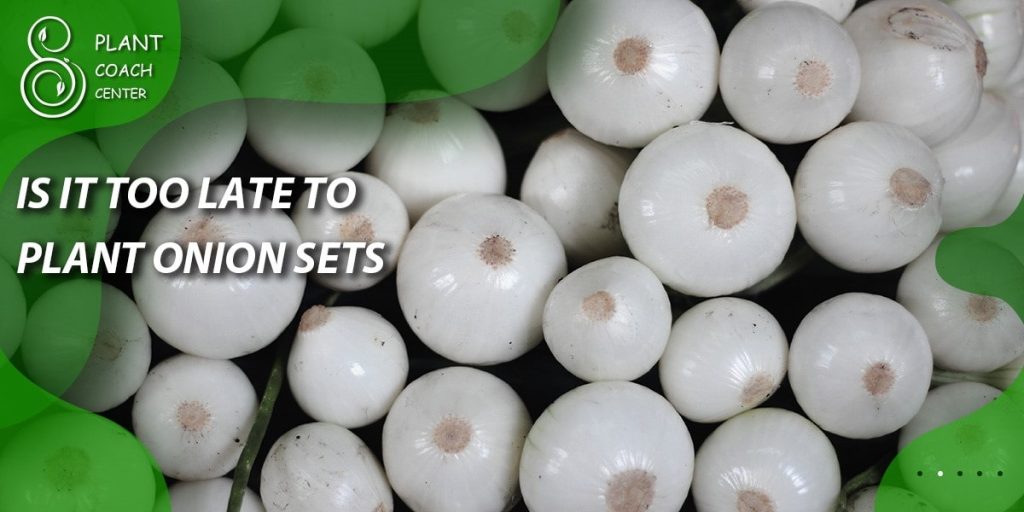
Indoor Ignition
Starting onion sets indoors allows you to get a head start on the growing season. Begin 8-12 weeks before your region’s last frost date. Plant onion sets in trays or pots filled with seed-starting mix. Keep them under grow lights or in a sunny window, maintaining a temperature of around 60-70°F (15-21°C). Transplant them outdoors once the soil is workable and temperatures are suitable.
Direct Soil Connection
Direct sowing involves planting onion sets directly into the garden soil. This method is suitable for regions with milder winters and well-draining soil. Wait until the soil temperature reaches 50-75°F (10-24°C) and is workable. Gently plant the sets about 1 inch deep, spacing them according to the recommendations for your chosen onion variety.
Cold Climate Strategy
Starting indoors might be safer in colder climates. By giving your onion sets a warm, controlled environment to sprout, you ensure they establish a sturdy root system before facing the challenges of outdoor conditions.
Direct-Sow Advantage
Direct sowing is often preferred in areas with milder winters, as it reduces transplant shock. The sets experience uninterrupted growth, adapting naturally to the outdoor environment.
Transplant Transition
Handle them gently when transplanting indoor-started onion sets to avoid damaging their delicate roots. Harden them off by gradually exposing them to outdoor conditions over a week. This helps them acclimate to temperature, sunlight, and wind.
Adapting Your Approach
Your choice between indoor starts and direct sowing should align with your local climate, onion variety, and personal preferences as a gardener. Both methods can yield successful results when executed correctly.
Reading Nature’s Signals: Observations for Planting Success
In gardening, nature is a master communicator, providing subtle cues that guide your planting decisions. From the behavior of local wildlife to the patterns of other plants, keen observation can be your greatest ally in determining the right time to plant onion sets. By honing your ability to read these signals, you tap into an ancient wisdom that transcends calendars and charts.
Animal Activity
Keep an eye on the activity of animals in your garden. When birds are busy building nests and foraging, it’s a sign that spring is on its way. Sighting earthworms on the surface indicates that the soil is warming up, hinting at the perfect time to plant onion sets.
Budding Beauties
The emergence of certain plants, known as indicator plants, can signal optimal planting conditions. For instance, when you spot the vibrant blooms of forsythia or the tender shoots of daffodils, it indicates that the soil has thawed and warmed enough for onions.
Spring Peepers and Moon Phases
Nature’s symphony can also be heard in the chorus of frogs known as spring peepers. Their calls become more frequent as temperatures rise. Some gardeners even follow moon phases as a guide, planting above-ground crops like onions during the waxing moon.
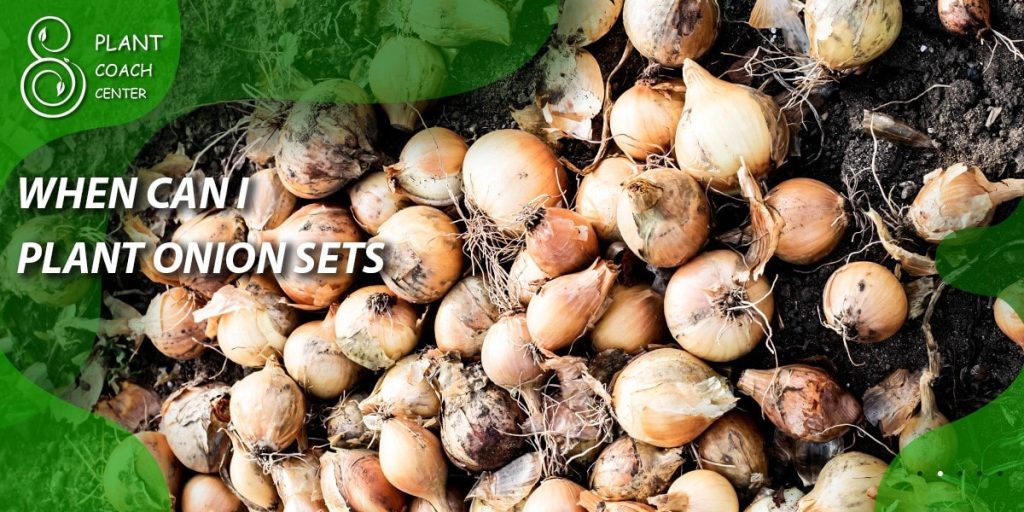
Local Wisdom
Engaging with local gardeners and farmers can provide invaluable insights. They have an intimate understanding of the local climate’s nuances and can offer firsthand advice on the best time to plant.
Soil Test
Take a literal hands-on approach by feeling the soil. If it crumbles easily in your hand and is not overly wet, it’s a sign that the Earth is workable and ready for planting.
Patience as a Virtue
While the excitement to start planting may be palpable, patience is vital. Rushing into the garden before the soil is adequately prepared or warmed can lead to disappointment. Trusting nature’s timeline can save you from setbacks down the road.
Conclusion
As we close the curtain on this exploration of onion planting, we find ourselves equipped with a symphony of knowledge that harmonizes the intricacies of nature’s calendar, onion varieties, soil preparation, geographic zones, timing techniques, and the subtle whispers of the natural world.
The journey from selecting the right onion type based on your region’s climate to deciphering the language of blooming indicator plants has led us to the heart of successful onion cultivation. Remember that the process is not merely a science but an art, where timing and intuition intertwine.
Whether you’re nestled in the embrace of a bustling city or relishing the tranquility of a countryside retreat, your understanding of when to plant onion sets will yield rewards beyond the tangible harvest. As you embark on your onion-growing endeavors, let the insights gathered here from plantcouchcenter.com be your companion, helping you navigate the intricate dance between your aspirations and nature’s grand design.
When is the best time to plant onion sets?
The timing varies based on your onion variety and local climate. Generally, plant short-day onions in fall or early winter, long days in early spring, and intermediate days in spring and fall.
How do I know if my soil is ready for onion sets?
Test the soil's readiness by feeling its texture – it should crumble easily. Ensure proper drainage, a pH of 6.0 to 7.0, and enrich it with compost or balanced fertilizer.
What role do hardiness zones play in onion planting?
Choose onion varieties suitable for your zone – short days for warmer zones, long days for cooler ones, and intermediate days for transitional temperatures.


